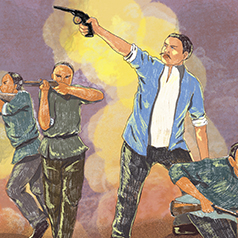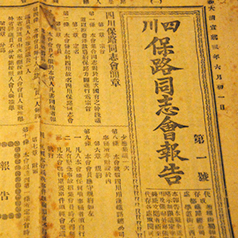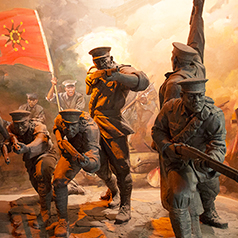
Anti-Qing Revolution (1894-1911)
The Anti-Qing Revolution: an Overview
Since the Opium War, China failed most attempts to reform itself and repel foreign invasions, exposing how hopelessly corrupt and inept the Qing government was. To save China from doom, a revolutionary faction represented by Sun Yat-sen launched successive armed uprisings. The undaunted revolutionaries finally succeeded in the Wuchang Uprising on 10 October 1911. The event sparked off nationwide uprisings and culminated in the 1911 Revolution that toppled the Qing dynasty, relegating China’s 2,000-year-old imperial rule to history.
The Anti-Qing Revolution: an Overview
Since the Opium War, China failed most attempts to reform itself and repel foreign invasions, exposing how hopelessly corrupt and inept the Qing government was. To save China from doom, a revolutionary faction represented by Sun Yat-sen launched successive armed uprisings. The undaunted revolutionaries finally succeeded in the Wuchang Uprising on 10 October 1911. The event sparked off nationwide uprisings and culminated in the 1911 Revolution that toppled the Qing dynasty, relegating China’s 2,000-year-old imperial rule to history.
(1) Sun Yat-sen and the Revive China Society
Sun Yat-sen was a key leader of the anti-Qing revolution in the early modern era. He founded the Revive China Society in 1894, and launched uprisings in Guangzhou and Huizhou in 1895 and 1900 respectively.
(2) The Russo-Japanese War and the Birth of the United League
Between 1904 and 1905, the Qing government did nothing to stop the Russo-Japanese War waged on the Chinese soil. This angered many patriots and fuelled revolutionary sentiments. In 1905, the founding of the United League opened a new chapter for the development of the anti-Qing revolution.
(3) Reform versus Revolution
China was in desperate survival during the late Qing era. Two major factions of national salvation emerged: the reformists and the revolutionaries. The two clashed in numerous debates, with the revolutionaries gradually gaining the upper hand.
(4) The Revolutionaries’ Armed Uprisings
From the Revive China Society’s establishment in 1894 to the 1911 Revolution, some 30 anti-Qing uprisings were launched by various revolutionary groups. Those launched by the United League were particularly significant.
(5) The Railway Protection Movement Shocked the Qing government
In May 1911, the Qing government attempted to nationalise locally backed railway projects in Sichuan, Guangdong, Hubei, and Hunan. Local shareholders, particularly those in Sichuan, were outraged and launched the Railway Protection Movement to retain their railway rights. The revolutionaries grabbed this opportunity.
(6) The 1911 Revolution
On 10 October 1911 (also known as the Xinhai Year in the Chinese lunar calendar), the Hubei New Army launched an uprising. It turned into what later known as the 1911 Revolution that put an end to the Qing rule.
(7) People of Hong Kong, Macao, and Overseas Chinese Supported the Revolution
The anti-Qing movement garnered support from people of Hong Kong, Macao, and the overseas Chinese. Not only did they financed the revolution, but they also fought in the uprisings.










